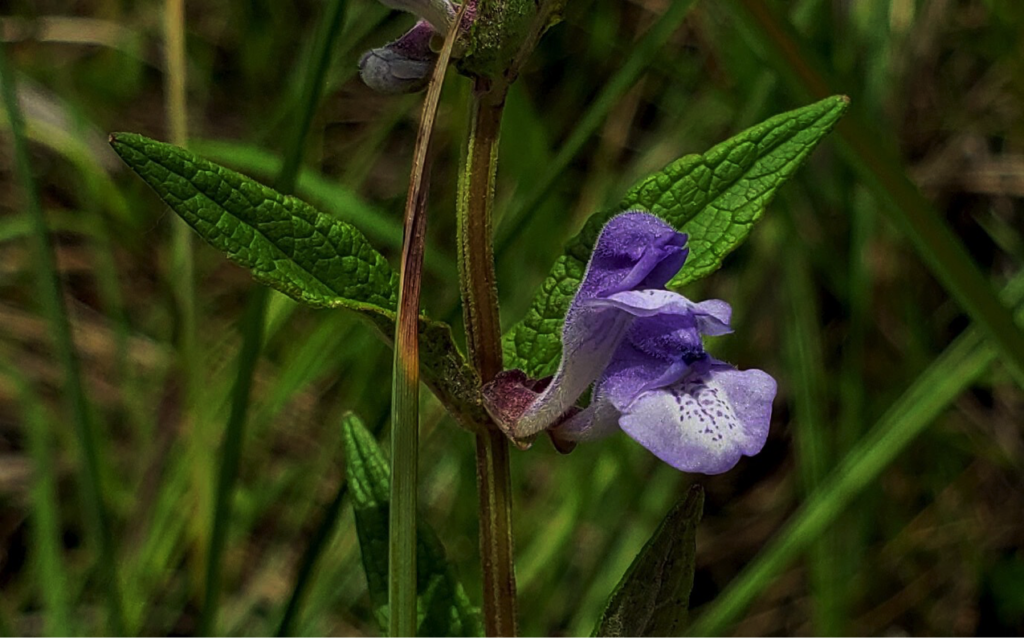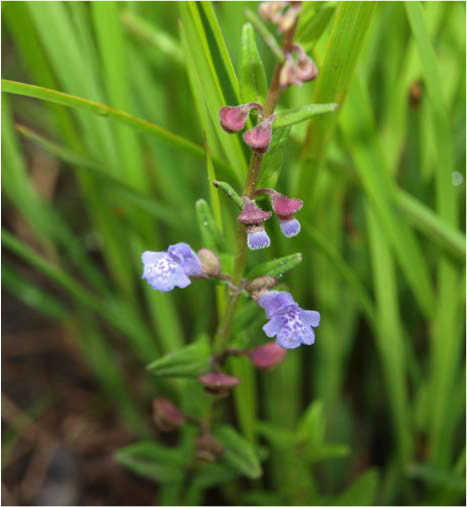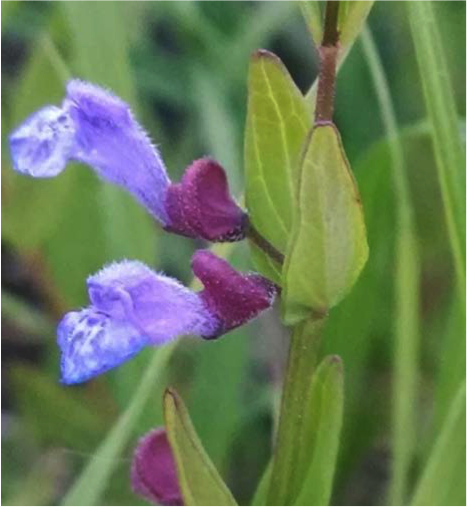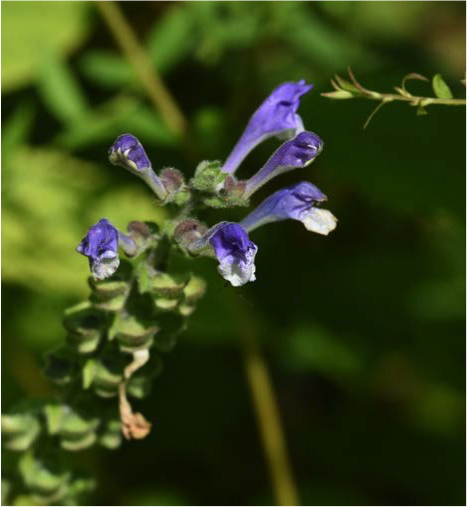The Scutellaria (Skullcaps) of Northeast Illinois

Scutellaria — or skullcap — species can be found in a variety of habitats in northeastern Illinois. These perennials belong to the mint family (note their opposite leaves); more than 470 species of skullcaps can be found worldwide, mainly in temperate regions. The genus name comes from the Latin scutella, meaning “square-shaped salver or tray; an allusion to the characteristic dorsal appendage of calyx,” according to Wilhelm and Rericha’s Flora of the Chicago Region. (The calyx is the part of the plant from which the corolla or flower petals emerge.)
As for our local species, perhaps our most frequently encountered one is Scutellaria lateriflora. It is something of a wetland generalist, occurring in flatwoods, marshes, sphagnum bogs and ditches, among other habitat types. This herbaceous species has toothed leaves longer than 1.5 inches; smooth stems and leaves; and numerous blue flowers, just shy of one centimeter in length, arrayed in one-sided racemes. The common name — mad-dog skullcap — comes from the once-held and false belief that the plant could cure rabies, though it’s also known as the more descriptive side-flowering skullcap. Our other Scutellaria species are more specialized but may be frequent or abundant in their habitats.
They may not be the showiest plants around, but skullcaps reward the observer who makes an effort to take a closer look.
Scutellaria galericulata, or marsh skullcap, occurs in marshes, wet to medium-wet sand prairies, and sphagnum bogs. Like Scutellaria lateriflora, this marsh-dweller has toothy leaves longer than 1.5 inches, but hairy undersides and pubescent stems. It blooms from mid- to late summer. Illinois is on the southern edge of this species’ range.
Preferring drier land, Scutellaria leonardii, or prairie skullcap, is a common species in mesic to dry prairies and sunny openings in savannas. Its leaves are less than 1.5 inches long, with mostly smooth edges, and short, curved hairs lying flat across the stem.

While the Scutellaria species lateriflora, galericulata, and leonardii can be found in all counties in northeastern Illinois, Scutellaria parvula — or small skullcap — occurs mainly in dolomite prairies in the Bedrock Valley Section along the lower Des Plaines and Kankakee rivers. It has small leaves like Scutellaria leonardii and both flower in late spring to summer. Scutellaria parvula and S. leonardii are sometimes considered the same species with two varieties (Plants of the World Online 2020), though they are considered separate in Flora of the Chicago Region (Wilhelm and Rericha, 2017). While S. parvula has glandular hairs and the leaf edges are flat, S. leonardii lacks glandular hairs and the leaf edges are revolute (rolled inwards).

If you are in a riparian woodland, you may encounter Scutellaria ovata, or heart-leaved skullcap, a regionally rare species. Scutellaria ovata flowers in terminal racemes and, as indicated by the common name, has cordate, or heart-shaped leaves. A conservative plant, its presence suggests a high-quality woodland where the ground flora is in an undisturbed state.

They may not be the showiest plants around, but skullcaps reward the observer who makes an effort to take a closer look.

